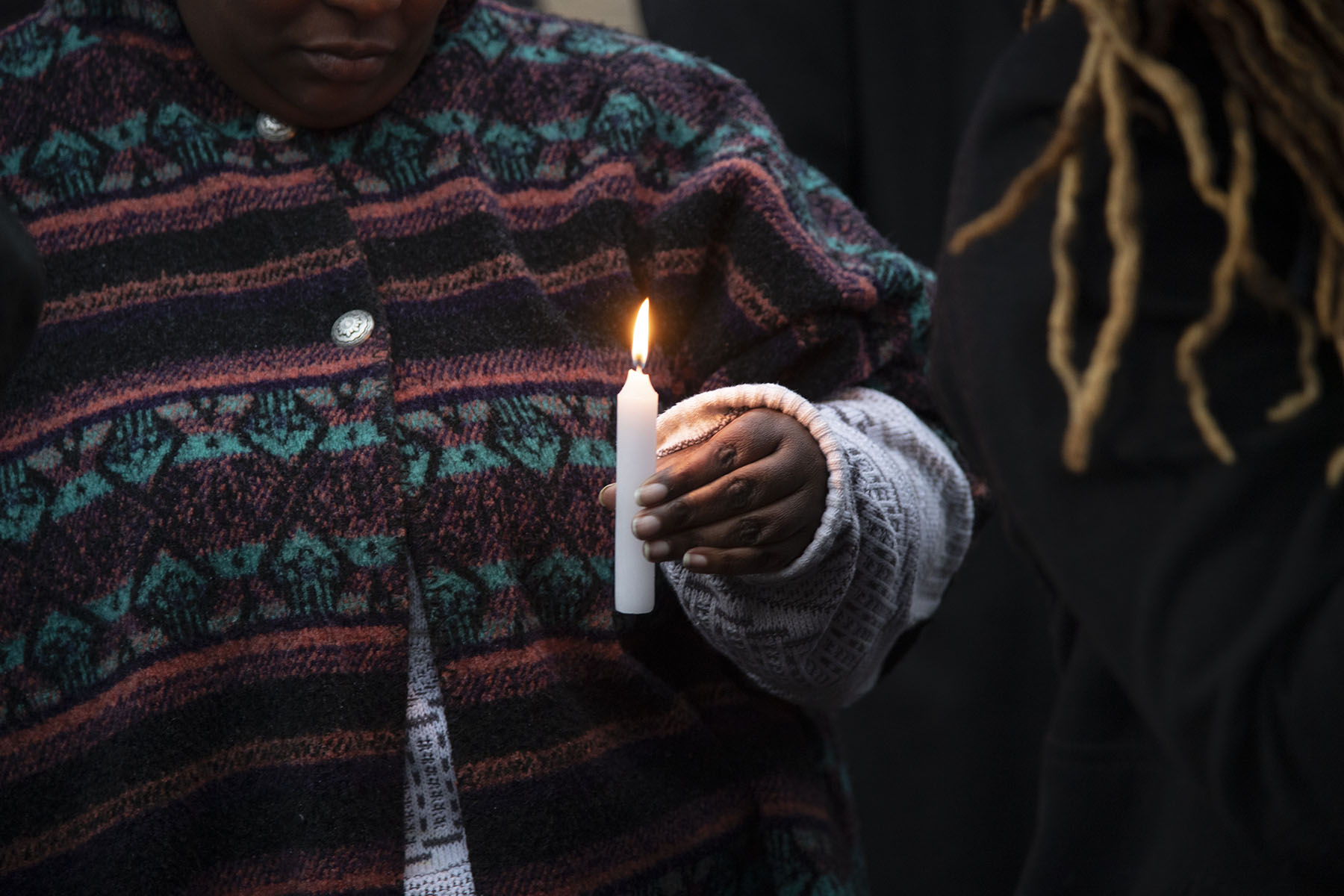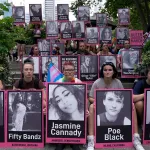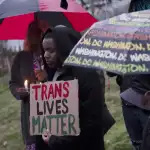Every year on the Transgender Day of Remembrance (TDOR), trans people lost to homicide and violence are remembered at memorials around the country and around the world.
Their names and stories are shared as a way to honor the lives they should have been able to live, and to recognize why those lives were taken away from them: transphobia. The victims’ true names and identities, so often ignored by families and left out of media and police reports, are held in moments of silence and across hundreds of candlelight vigils.
Gwendolyn Ann Smith’s work chronicling anti-transgender murders led to the creation of TDOR in 1999. A Black trans woman, Rita Hester, was killed the previous year — and another Black trans woman, Chanelle Pickett, had been murdered near the same Boston area in 1995. Smith knew their deaths had to be remembered. That hasn’t changed, she told The 19th.
“You are seeing more deaths happening. So is it getting better? Are we seeing less? No, we’re seeing more. And this still remains an issue. And it still needs to be talked about,” Smith said.
Some trans advocates believe that, as more is learned about how different kinds of discrimination harm the mental and physical health of trans people, that the list of who is memorialized at TDOR should be broadened. Deaths are being caused by more than violent killings, they say — and all lost community members deserve to be mourned.
Smith is apprehensive about that. She’s concerned about the effects of broadening the focus of TDOR when there is already an extreme need to discuss the increasing number of anti-trans killings. On TDOR, public attention has to be focused on this specific issue to try and make a difference, she said.
The Federal Bureau of Investigation’s annual crime report for 2022, released last month, found a dramatic increase in anti-LGBTQ+ hate crimes. Anti-transgender crimes increased by nearly 40 percent compared to the previous year, the Justice Department noted in a breakdown of the FBI’s data. And LGBTQ+ advocacy groups find every year that the fatal violence facing trans people primarily targets Black women and people of color.
The increase in homicides of transgender people over the last several years, notably between 2017 and 2021, when trans homicides nearly doubled, cannot be attributed to just better media reporting of those deaths, Smith said. There is more violence than there used to be.
“You are seeing, particularly in the United States but also elsewhere, a massive ramping-up of anti-trans rhetoric, anti-trans bills being introduced, in some cases being passed,” she said. “You are seeing all of this moral panic around trans and LGBQ identities. That is, in my opinion, absolutely helping to drive some of the anti-trans animus.”
Elle Moxley, founder of the Marsha P. Johnson Institute, believes that the violence against transgender people, especially Black trans women like herself, has gotten worse. She has lived it firsthand while advocating for Black trans lives, including through the institute.
“When I started doing this work, I was very much so doing it because of my fear that I would end up being subjected to murder or violence,” she said. Over the last 10 to 15 years, it has become common for the women she meets through her work, and for women who influenced her own journey, to be killed — and to join the list of names shared on TDOR.
She remembers Ashanti Carmon and Zoey Spears, who were killed roughly six months apart in 2019 in the same suburb outside Washington, D.C. That suburb was Moxley’s old neighborhood, and Spears was her mentee. She remembers Nona Moselle, her close friend and sister, who died in 2021.
Moselle’s cause of death was unclear at the time, and foul play was not suspected. But she had faced violence in her life. Years before her death, she had survived being stabbed 48 times, and had experienced housing insecurity and financial instability. She had used sex work to survive, which frequently makes trans women vulnerable to violence and limits what kind of help they can get while seeking safety.
Moselle was not one of the names shared on national TDOR lists in 2021, although she was remembered locally. She was also memorialized on Smith’s website, Remembering our Dead — the project she created after Hester’s murder that led to the first Transgender Day of Remembrance vigil. She is part of that website’s 2021 TDOR report.
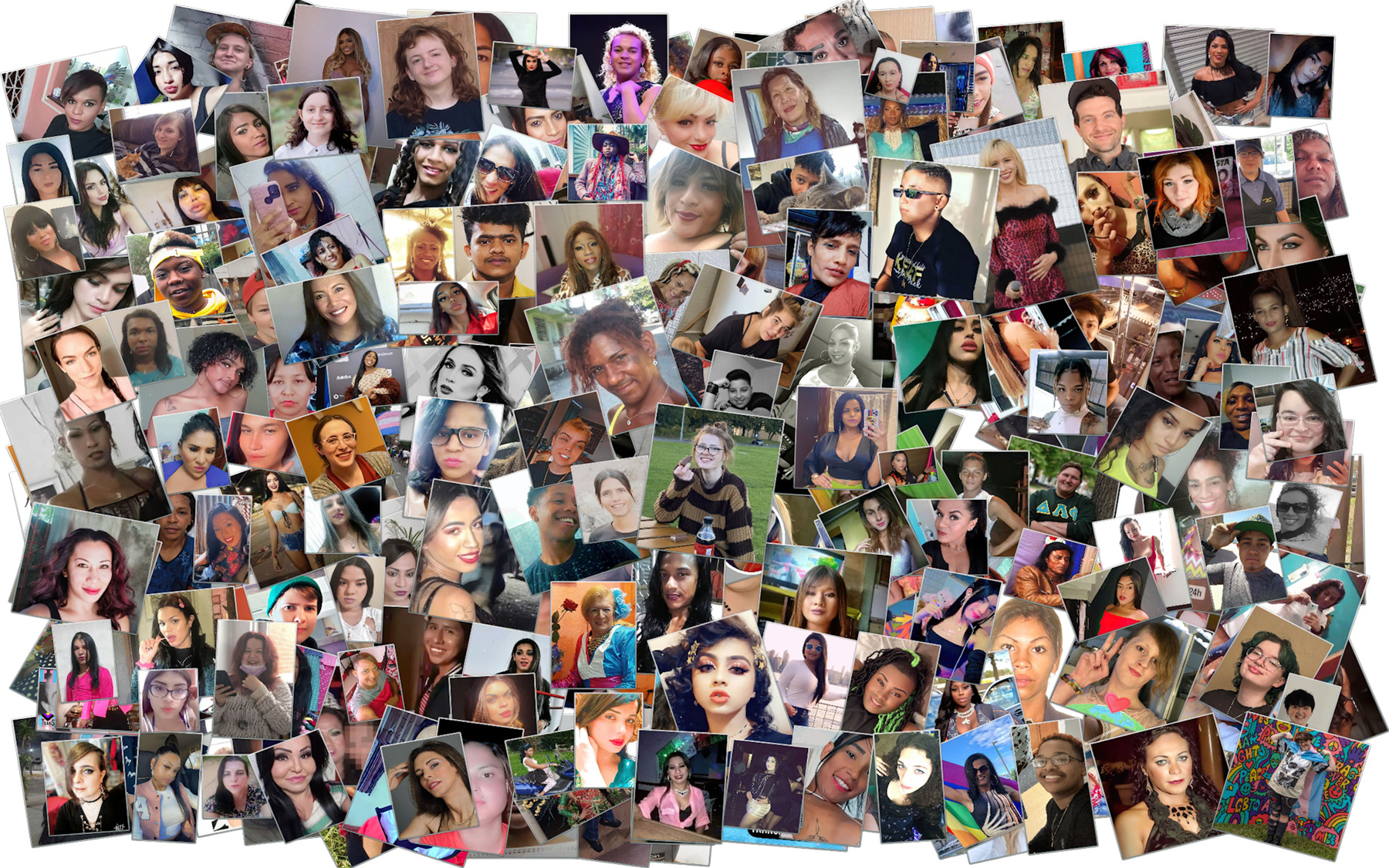
Society has still not accepted transgender people as powerful and deserving of humanity, Moxley said. And until that changes, Trans Day of Remembrance will continue to be necessary to restore humanity to the lives of those who have been taken. In that vein, expanding the scope of TDOR makes sense to her.
This year, the National Center for Transgender Equality (NCTE), the largest transgender policy organization in the country, wanted to reshape how violence against trans people is addressed in its annual TDOR report. In the report, the names and stories of those who died this year include those who died by suicide, or who died after battling health issues like lung cancer.
This year is the first time that the NCTE has expanded its scope of who is being mourned and remembered for Trans Day of Remembrance. That expansion mimics what communities of color, specifically Black trans communities, have always done on TDOR — and how they think about their own lives, Moxley said.
“We’ve always talked about the atrocities as being bigger than just gun violence, because there is so much systemic and structural violence that happens,” she said. “We’re seeing violence happen in legislation across the country.”
Anti-trans killings and pervasive health disparities are both reflections of the society that trans people live in each day, so the NCTE’s remembrance report should be just as expansive as those lives, she said.
Almost two-thirds of the transgender homicide victims tracked by the LGBTQ+ rights organization Human Rights Campaign in the last year were Black women. And since 2013, roughly 85 percent of the victims tracked by the LGBTQ+ rights group have been people of color. Six in 10 known victims tracked by the HRC since 2013 have been Black trans women.
The exact data gathered on anti-trans killings and violence in the U.S. varies from one LGBTQ+ advocacy group to the next. But on one point there is consensus: Black trans women face the most violence of any other demographic within the trans community. This violence is part of the wide-ranging disparities that trans people of color face at greater levels than other trans people, due to the converging effects of discrimination based on race and gender.
Discrimination, bullying, and hatred — or living in environments hostile to LGBTQ+ people — can contribute to higher suicide rates and other health issues, said Kris Tassone, policy counsel for the NCTE and lead researcher for the organization’s TDOR project this year.
“That is a type of violence against someone that causes impacts on their health and life,” Tassone said. Not being able to access gender-affirming care to treat gender dysphoria, or not being able to get health care at all due to medical discrimination, also shortens lifespans and puts trans people at risk of medical complications, they said.
“There are a lot of ways in which violence impacts trans people’s lives and we are including all of our trans, gender non-conforming, nonbinary, gender-expansive people who have died in the past year in this year’s TDOR, recognizing the so many ways that violence shortens and ends the lives of trans people,” Tassone said.
Victoria Kirby York, director of public policy and programs at the National Black Justice Coalition, was initially worried that broadening the scope for TDOR would cause fewer people to pay attention to the epidemic of violence that Black trans people face. Then, more reflection changed her mind.
“At the root of all these violent and nonviolent deaths are stigma, bias and discrimination, and if we approach the root causes of all of these deaths, we should see decreases in all of them,” York said. They feel that this is an important project that will increase attention and funding for organizations advocating for trans rights — and they hope that support is spread equitably to Black trans people.
Impact is one goal of the remembrance project. In an introduction to the NCTE’s remembrance report, Tassone writes that the purpose of the report is “to recognize the lives lost and make the scope of this crisis impossible to ignore.” The decision to broaden the scope of TDOR was not done quickly, they said.
“We thought about it very carefully before making that expansion, because we recognize that TDOR was originally to draw attention to the violent killings of trans people, especially Black trans women,” they said. “And I don’t think that including more people in this list diminishes or takes away from that.”
Smith, who created TDOR, disagrees. She doesn’t want to tell anyone how they should mourn. But she feels that expanding the focus of TDOR dilutes the core message of the somber event.
“It goes back to why the event started. And it started because of a murder — technically two murders, Rita Hester and Chanelle Pickett. Over the years, that simply has remained the focus. We do want to see violence like that end. We want to stop being killed in the numbers we’re killed in.”
Still, there is room for other stories. Past TDORs have honored some cases that weren’t murders, Smith said. Suicides caused by anti-trans harassment, or trans people who died after not receiving proper medical care due to discrimination, have been memorialized, she said. But these are exceptions to the overall message of TDOR, she said.
Smith’s website, Remembering our Dead, notes at the top of the home page that details are shared for those lost to suicide — not just killings and murders.
The circumstances surrounding several suicides shared on the NCTE’s Transgender Day of Remembrance report describe isolation in the face of anti-transgender discrimination.
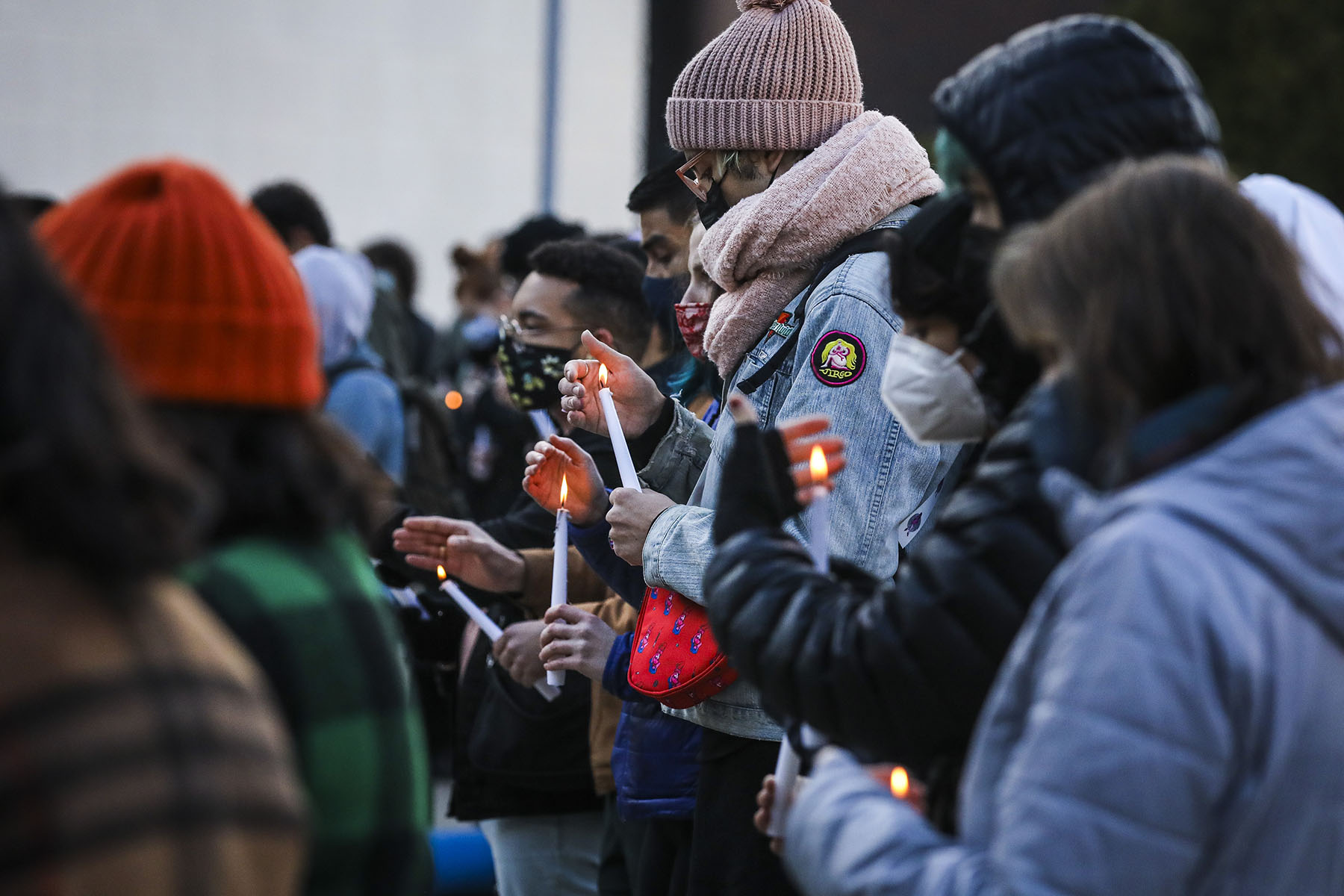
Henry Berg-Brousseau was 24 and working as the deputy secretary of the Human Rights Campaign when he died by suicide last December. The lack of acceptance for trans people and hateful rhetoric swirling around anti-trans legislation took a toll on him, his mother said in a statement.
Eden Knight, 23, left a suicide note online in March this year that described being manipulated to detransition by her influential family and by attorneys that they hired to isolate her and bring her back to Saudi Arabia from America.
F.L. “Bubba” Copeland, the former mayor of a small Alabama town, died by suicide this month only two days after a conservative news site published photos of them in women’s clothes, and shared Copeland’s alleged social media accounts that described themself as a transgender woman. Copeland was referred to as a man — and by he/him pronouns — in nearly all mainstream media coverage, even as the circumstances pointed to a lack of clarity about their gender identity.
“I think that tragedy really shows how nuanced this reporting has to be,” said Rodrigo Heng-Lehtinen, executive director of the NCTE. Copeland’s death shows the depth of transphobia that is around us every day, he said.
“Bubba’s situation is, in a way, similar to Eden Knight’s, in that if we lived in a world that fully accepted transgender people, Bubba would still be here today. And that is true whether Bubba would have 100 percent identified as transgender or not.”
To Tassone, TDOR has never been so important. The 53 trans people lost to violence in the United States this year, and the 33 who lost their lives to suicide, did not live carefree or privileged lives and die of old age.
“This is a list of people who should still be with us,” they said. “Because of hatred, because of discrimination, because of institutional bias, because of laws that are being passed that limit the ability of trans and non-conforming people to move in society and live safely in society, these people’s lives were cut short.”
